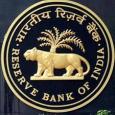|
Title |
S S Tarapore (1936-2016) | Economic and Political Weekly |
|
Volume |
51 |
|
Issue |
9/dated 27 Feb, 2016 |
|
Edition |
http://www.epw.in/journal/2016/9/obituaries/s-s-tarapore-1936-2016.html |
|
Ref Type |
Web Page |
|
Retrieved Date |
11/19/2017 |
|
Source Type |
Electronic |
The content under this head is not the property of The Billion Press. It is presented here from its original source (cited herein above) to offer a collection of tributes that appeared in various media houses in memory of Mr. S S Tarapore after he passed away suddenly on February 3, 2016. The following piece appeared in the highly regarded magazine 'Economic and Political Weekly' (EPW).
By K Kanagasabapathy
I joined the research department of Reserve Bank of India (RBI) in September 1977, but I did not have an opportunity to personally meet S S Tarapore (SST) for about 11 years, till December 1988, as I was away from the department working with the Agricultural Refinance and Development Corporation/National Bank for Agriculture and Rural Development till mid-1983 and later with RBI training institutions at Chennai and Mumbai. But I came to know that as a person paying keen attention to the department’s interest, he had kept a watch on my movements and performance wherever I worked. Since 1988, I had regular contact with him, both officially and personally, always warm-hearted and affectionate till the very end.
Much before the reform era in the early 1990s, he was instrumental in spearheading reforms in public debt management and the money market by the early and mid-1980s by introducing, first, auction based issuance of 182-day treasury bills and then establishing the Discount and Finance House of India to strengthen market-based monetary operations of RBI.
During one of my short visits to the RBI central office in the early 1980s, I was shown a person clad in a white full sleeves bush shirt walking swiftly out of the building along with another person also clad identically, both of them of similar frame and height. One was SST. The other was N A Mujumdar whom SST considered his guru. On any working day you could not miss this pair walking together after lunch. I was told that SST was a strict disciplinarian. Later, I realised that he was ruthless in applying discipline to himself, a legendary piece of information in RBI and also outside. Nobody dared to offer him even a pen as a gift.
The second thing I heard about SST, and that I was very much convinced myself about, was that he was a man of conviction and strong beliefs. He was no doubt conservative in his approach, but a reformist in actions. Much before the reform era in the early 1990s, he was instrumental in spearheading reforms in public debt management and the money market by the early and mid-1980s by introducing, first, auction based issuance of 182-day treasury bills and then establishing the Discount and Finance House of India to strengthen market-based monetary operations of RBI.
One of his strongest beliefs which SST also shared with C Rangarajan was on the need for operational independence of the central bank and transparency in the conduct of monetary policy. He advocated several reforms, including amendments to the RBI Act as member of the Advisory Group on Transparency in Monetary and Financial Policies.
His reform initiatives followed at a faster pace in the 1990s. He chose me as the first director in the Internal Debt Management Department (IDMD) when it was carved out in late 1992 and guided me through till his retirement in September 1996. When I told him that adhoc treasury bills must end, he smiled and showed me protracted correspondence with the government since the time of R N Malhotra as governor of the RBI. He joined hands with Governor C Rangarajan and saw to it that the more than a three-decade-old system of ad hoc treasury bills was put to an end.
He was also a strong believer in creating a Consolidated Sinking Fund for retirement of ballooning public debt, and that governments not having a revenue surplus should not be a deterrent to that healthy practice.
One of his strongest beliefs which SST also shared with C Rangarajan was on the need for operational independence of the central bank and transparency in the conduct of monetary policy. He advocated several reforms, including amendments to the RBI Act as member of the Advisory Group on Transparency in Monetary and Financial Policies. He also believed in separation of the debt management function from RBI and setting up of an independent debt management office by the government, but not in the way the Financial Sector Legislative Reforms Commission recommended it. Another strong belief he held was on exchange rate management being guided by the real effective exchange rate (REER) within a band of plus/minus 5 percentage points. He believed that the RBI was following this even though not explicitly stated!
I had the opportunity to work with him again as secretary to the Committee on Fuller Capital Account Convertibility (2006). He worked with clock-like precision, conducted meetings over 13 consecutive Saturdays (nobody, including members, could be absent) and submitted the report on the deadline date of 31 July 2006. He maintained the same cautious, conservative reformist approach in the second report as in the first one in 1997.
SST always used to talk about management of personal finances and he used to write on this for the common person in his regular syndicate columns. One of his pieces of advice was to have some share of investment in equity and some in gold. This showed in a way his conservative approach and a reformist attitude towards managing personal wealth.
S S Tarapore maintained dignity and protocol in all official dealings. Nevertheless, when it came to personal dealings, it was love and affection that guided his relationship with others.
(The article has been written by K Kanagasabapathy. It was published in The Economic & Political Weekly on February 27, 2016)












